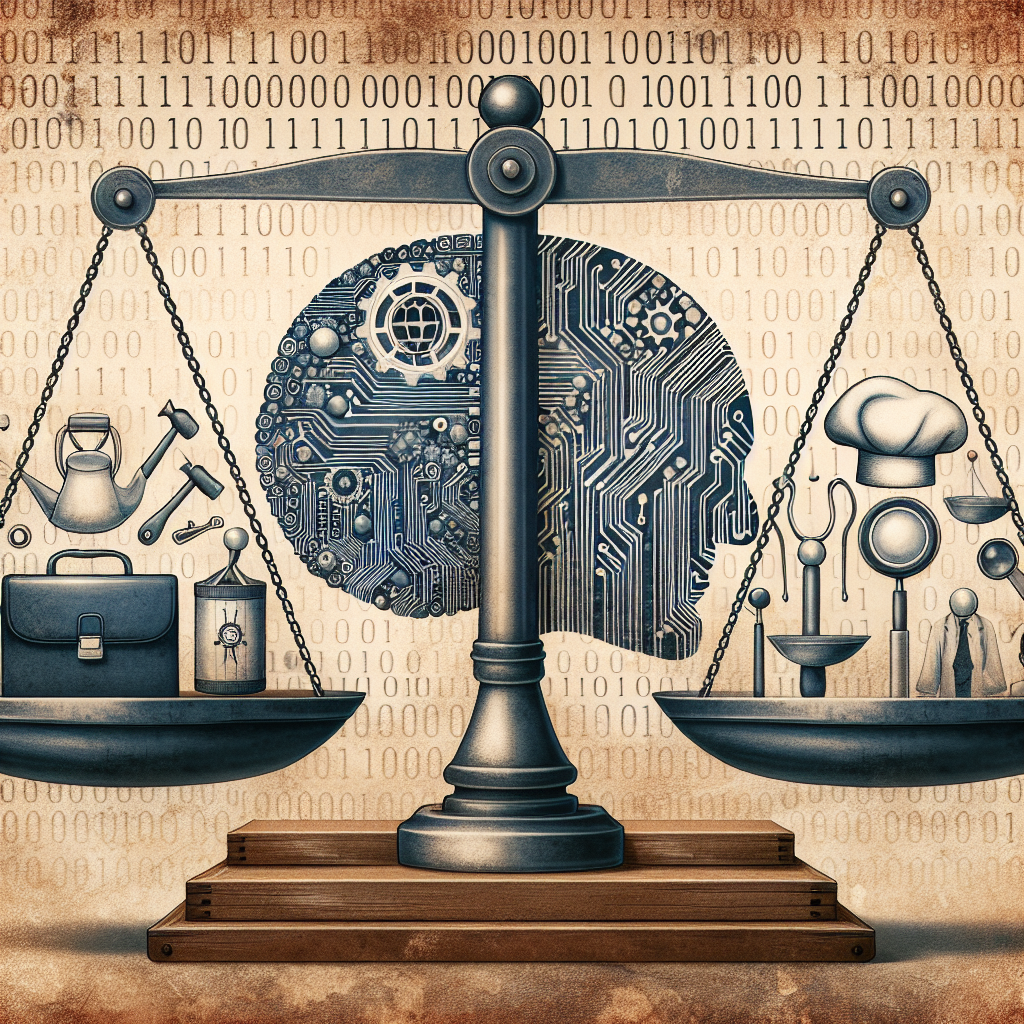Artificial Intelligence (AI) has become increasingly prevalent in our society, with applications ranging from virtual assistants like Siri and Alexa to self-driving cars and automated customer service. While AI has the potential to revolutionize industries and improve efficiency, there are also economic risks associated with its adoption, particularly in terms of disruption and unemployment.
One of the main economic risks of AI is the potential for disruption in various industries. AI technology has the ability to automate tasks that were previously performed by humans, leading to the displacement of workers in certain sectors. For example, AI-powered robots are increasingly being used in manufacturing and warehousing, reducing the need for human labor in these industries. This can result in job losses and a shift in the types of skills that are in demand in the labor market.
Another economic risk of AI is the potential for increased income inequality. As AI technology becomes more widespread, there is a risk that it will benefit certain segments of the population more than others. For example, workers with highly specialized skills that are in demand in the AI industry may see their incomes rise, while those in less-skilled jobs that can be easily automated may see their incomes decrease. This can exacerbate existing income inequality and lead to social unrest.
Unemployment is another major economic risk associated with AI. As AI technology becomes more advanced, there is a risk that a large number of jobs will be automated, leading to widespread unemployment. A study by the McKinsey Global Institute estimated that up to 800 million jobs worldwide could be automated by 2030. While some new jobs may be created as a result of AI adoption, there is a risk that the pace of job creation will not keep up with the pace of job destruction, leading to a net loss of jobs.
There are also concerns about the impact of AI on job quality. As AI technology becomes more widespread, there is a risk that it will lead to the creation of more precarious and low-paying jobs. For example, gig economy platforms like Uber and TaskRabbit rely on AI algorithms to match workers with tasks, but these workers often lack job security and benefits. This can lead to a decline in job quality and a decrease in living standards for workers.
Despite these economic risks, there are also potential benefits associated with AI adoption. AI technology has the potential to increase productivity and efficiency in various industries, leading to economic growth and higher living standards. For example, AI-powered algorithms can help businesses make better decisions and optimize their operations, leading to cost savings and increased profits. AI technology also has the potential to create new industries and job opportunities, such as in the development and maintenance of AI systems.
To address the economic risks of AI, policymakers and businesses must take proactive steps to ensure that the benefits of AI adoption are shared more equitably. This may involve investing in education and training programs to help workers acquire the skills needed to thrive in an AI-driven economy. It may also involve implementing policies to support workers who are displaced by AI technology, such as retraining programs and income support. Businesses can also play a role by ensuring that their AI systems are designed and implemented in a way that is ethical and fair, taking into account the potential impact on workers and society.
In conclusion, while AI has the potential to bring about significant economic benefits, there are also risks associated with its adoption, particularly in terms of disruption and unemployment. It is important for policymakers and businesses to take proactive steps to address these risks and ensure that the benefits of AI adoption are shared more equitably.
FAQs:
1. What industries are most at risk of disruption due to AI technology?
– Industries that rely heavily on routine tasks that can be easily automated, such as manufacturing, retail, and transportation, are most at risk of disruption due to AI technology.
2. Will AI technology lead to widespread unemployment?
– While there is a risk that AI technology could lead to widespread unemployment, it is also possible that new jobs will be created as a result of AI adoption. It will depend on how policymakers and businesses respond to the challenges posed by AI technology.
3. How can workers prepare for the impact of AI on the labor market?
– Workers can prepare for the impact of AI on the labor market by acquiring skills that are in demand in the AI industry, such as data science and programming. They can also stay informed about developments in AI technology and how it is likely to affect their industry.
4. What role can policymakers play in addressing the economic risks of AI?
– Policymakers can play a key role in addressing the economic risks of AI by implementing policies that support workers who are displaced by AI technology, such as retraining programs and income support. They can also regulate the use of AI technology to ensure that it is deployed in an ethical and fair manner.

